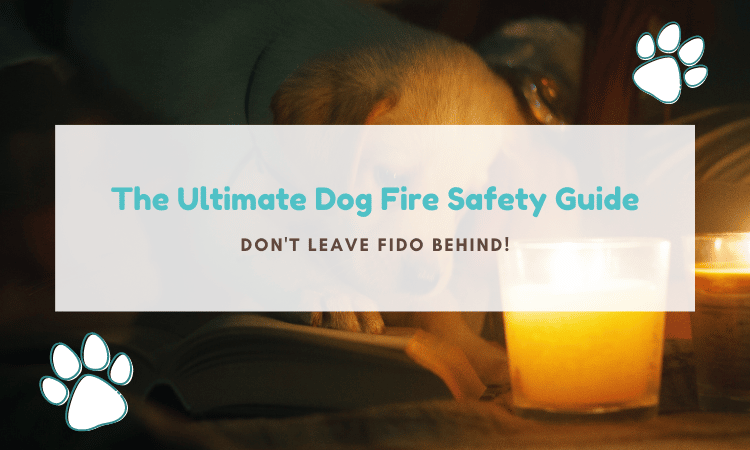Did you know that about 40,000 pets die in house fires each year? Most deaths are by smoke inhalation, as many as 500,000 more furbabies suffer physical harm from the disasters.
In 2009, the American Kennel Club and ADT established National Pet Fire Safety Day to promote awareness among pet owners. The official observance falls on July 15 every year.
But don’t wait for July. With winter approaching and the increased use of fireplaces and wood-burning stoves, not to mention holiday decorations such as Christmas trees and pine boughs, there’s a risk of starting an unintentional blaze in our homes.
So, let’s examine some fire safety tips to protect your dog:
Think About Installing a Monitored Smoke Detector
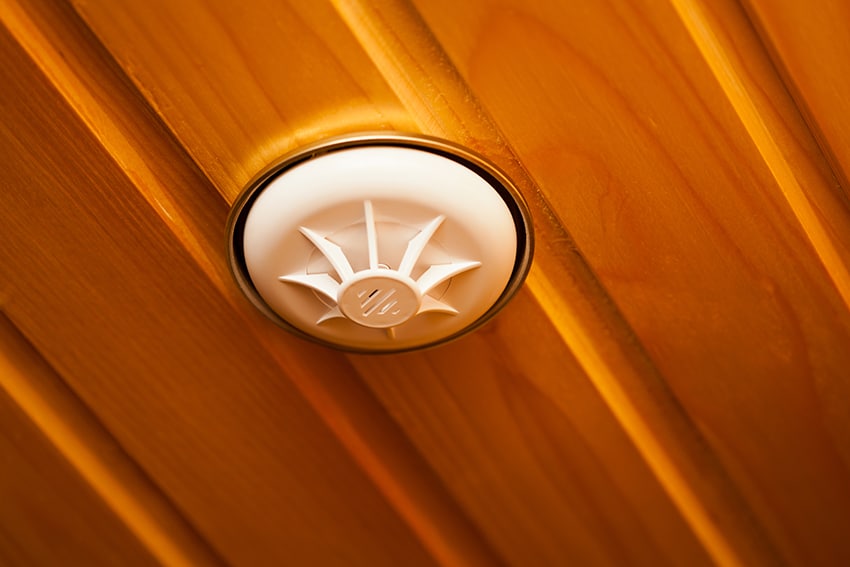
Firefighters recommend that we check our smoke detector batteries when most Americans change their clocks in the fall. We do that to help protect our homes, families, and pets.
If you’re in a community that’s fire-prone or if you think you’re at risk of a home blaze, consider a monitored smoke detector. These devices take advantage of modern technology to link your home to a monitoring center. So, even when you’re not at home, the system will notify the fire department for you if there are signs of a fire. Early notification can make all the difference when it comes to saving our pups’ lives.
Puppy-Proof the Home
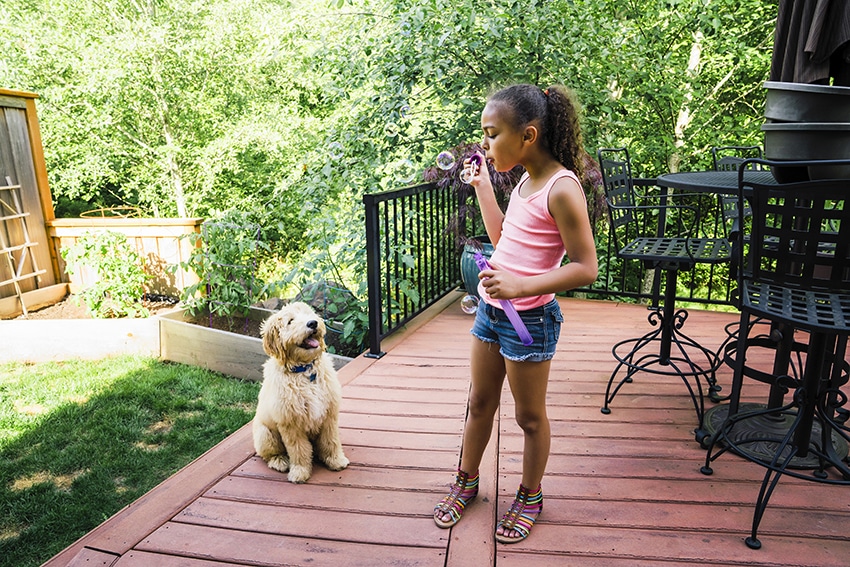
According to the National Fire Protection Association, around 1000 fires a year are started by household pets. To help you avoid becoming one of these statistics, the American Kennel Club and ADT recommend the following:
- Don’t Leave Open Flames Unattended. Animals, like children, are curious. If you leave a candle burning or a fire in the fireplace, they may try to investigate the dancing flames. Make sure you keep pets away from unprotected fires and extinguish all flames before you leave the house.
- Remove or Cover Stove Controls. Most fires started by pets involve the cooktop or stove. Protect your appliance’s knobs whenever you’re not home. That way, your pooch won’t be able to jump up, knock the controls, and accidentally turn on a burner.
- Use Flameless Candles. Investing in candles that use a light bulb in place of a flame removes the risk of your pup knocking over a candle and starting a fire.
- Confine Youngsters. Puppies seem to get into trouble more readily than older canines. Keep your younger pets in a crate or confined behind a baby gate and away from any fire hazards.
Tag or Micro-Chip Your Dog

Fires aren’t just scary for us. They’re also terrifying for our pets. When you have to evacuate your home due to a blaze, your furbaby might get spooked and run off to find a safe place. That’s why current identification is imperative for your pooch. Attach an ID tag with your contact information to Fido’s collar. In addition, consider getting your pup microchipped to assist help ensure a happy reunion.
Prepare an Emergency Plan and Run Fire Drills
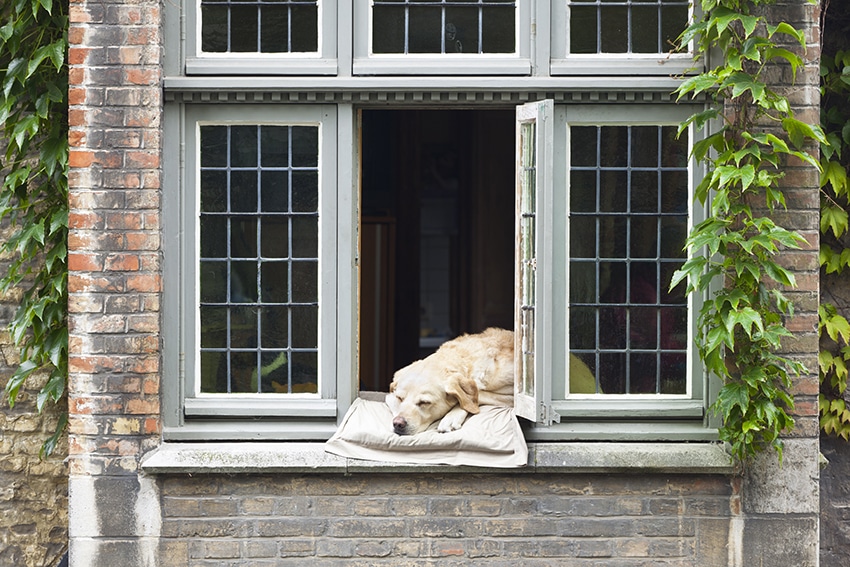
Preparation is one of the best forms of prevention. Take time to map a floorplan of your home. Identify safe escape routes depending on the location of a fire in the house. Hold a family meeting and determine who’s responsible to get your pets out safely. Then run some fire drills and include your pooch. Train him to come when the responsible person calls him. With practice, you and your furry friend will learn a routine that can help everyone remain calm in an emergency situation.
Know Your Dog’s Favorite Hiding Places
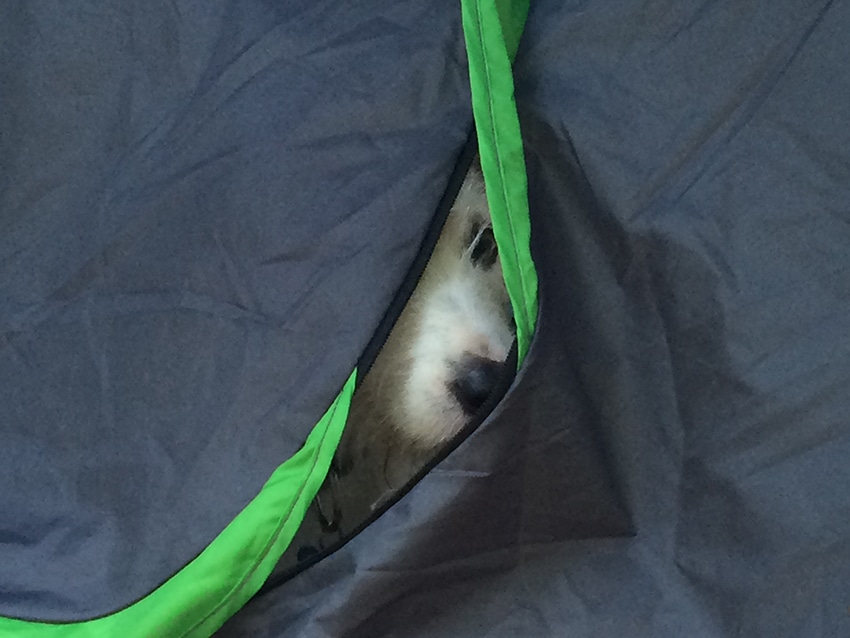
In the midst of a fire, many pets will go to a safe place to hide. Fire evacuations don’t leave you much time to search for a scared animal. If you know the places your pooch feels safe and secure, it’s more likely you’ll be able to find them quickly and get them to safety. You can also make the process easier by practicing fire drills with your furbaby. Teach them to come when you call and practice putting them in a crate if they’re small enough to carry.
If there’s no time to retrieve your pet before you have to evacuate, you can alert the firefighters about possible hiding locations.
Have Emergency Supplies and a Travel Kit Ready
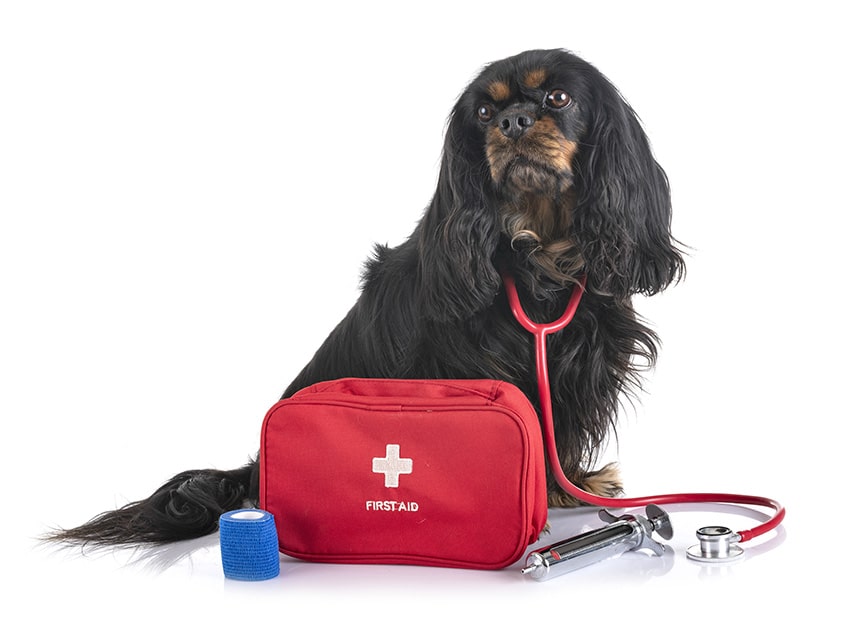
You hope you’ll never need to use emergency supplies, but it’s best to be ready for the worst-case scenario. Prepare a bag of items, label it clearly for evacuation, and make sure everyone knows where it is. Place your evacuation kit near the door where you can easily grab it on the way out. Remember to pack:
- an extra leash and collar
- Glow in the dark harness
- Medications
- Enough food for at least a few days
- Food and water bowls
- A week’s worth of bottled water
- Flashlight
- Dish soap
- Paper towels
- Blanket
- Favorite toy
- Copies of important medical records and recent photos of your dog
- A first-aid kit for your pooch
Complete a Post a Rescue Alert Sticker

The ASPCA and other organizations offer a pet safety pack that includes a rescue alert sticker. You can request a packet and complete the sticker with vital information about your pets such as the types and number of furbabies, your veterinarian’s name and number, and your contact information. Post this decal in an obvious spot such as your front door. If you have time to get your pets out, you can write evacuated on the sticker to let the rescue crews know that they are safe.
Make it Easy for Firefighters to Rescue Your Pets
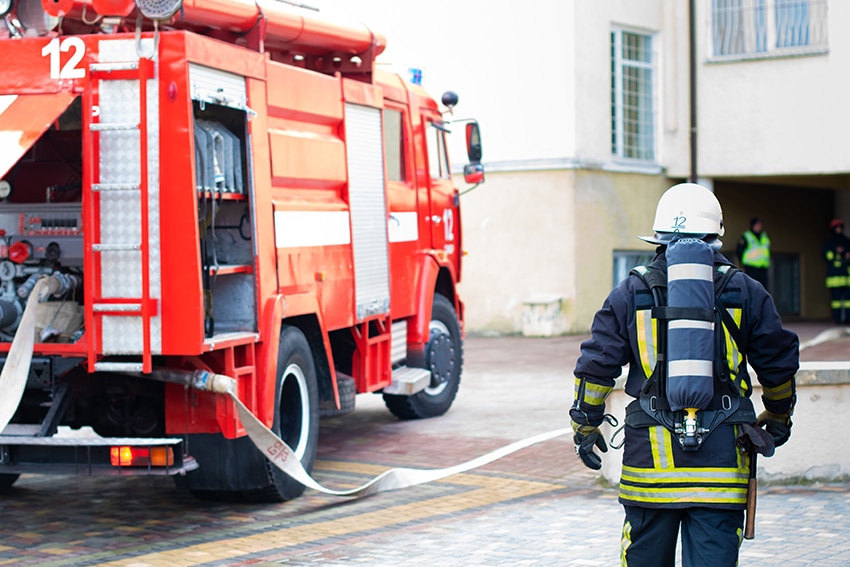
The easier you make it for firefighters to reach your canine companions, the more likely they’ll be able to rescue them. With that in mind:
- Locate crates near the front door.
- Keep a collar on your pooch.
- Place a leash near the entrance.
- If you use safety gates or other means to limit your pal’s access to parts of the house, locate his free space near the exit to make it easier for rescue workers to find him.
- Visibly post a pet rescue sticker that indicates the number of animals in the building.
When Evacuating, Bring Your Pets Whenever Possible

As part of your fire safety preparedness, have a plan for your pets. Do your best to never leave them behind. Animals can easily become trapped or panic and run away. You’ll also want to check in advance for shelters that allow pets as not all places welcome four-footed-friends. Check with your veterinarian, local shelters, and area hotels to find places where you can temporarily rehome your pup in an emergency. There may also be friends or relatives nearby who would be willing to house Fido for a spell.
Avoid Losing Your Pets Amidst an Evacuation
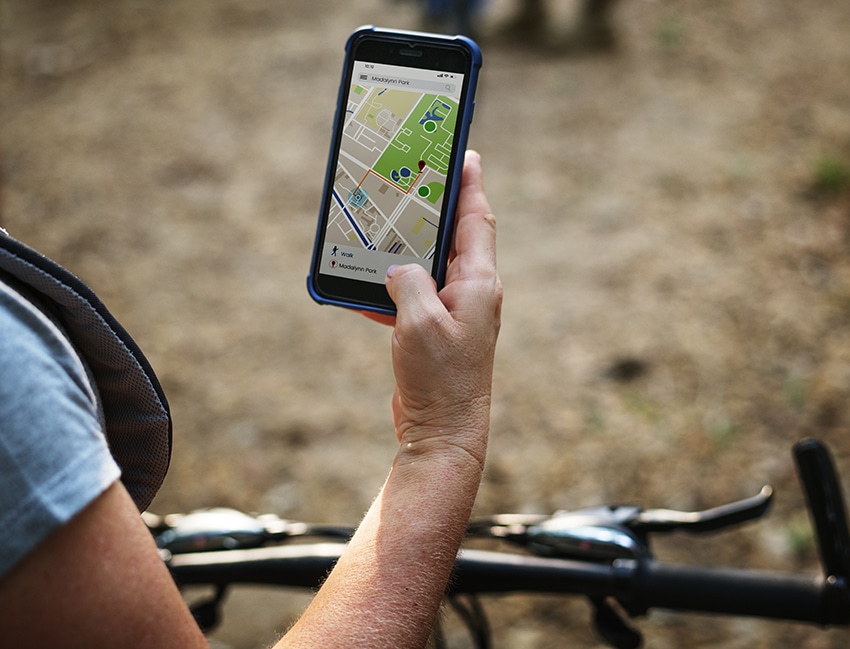
Fires are scary, and panicking pets may escape and run away. But there are things that you can do to make it easier to track your pooch. Start by microchipping your furbaby. You can also invest in a tracking device, These devices clip to your dog’s collar and provide GPS tracking data to an app that you download on your mobile phone. That way, if your special pal takes off, you’ll be more likely to locate him.
Monitor Your Pets Following a Fire
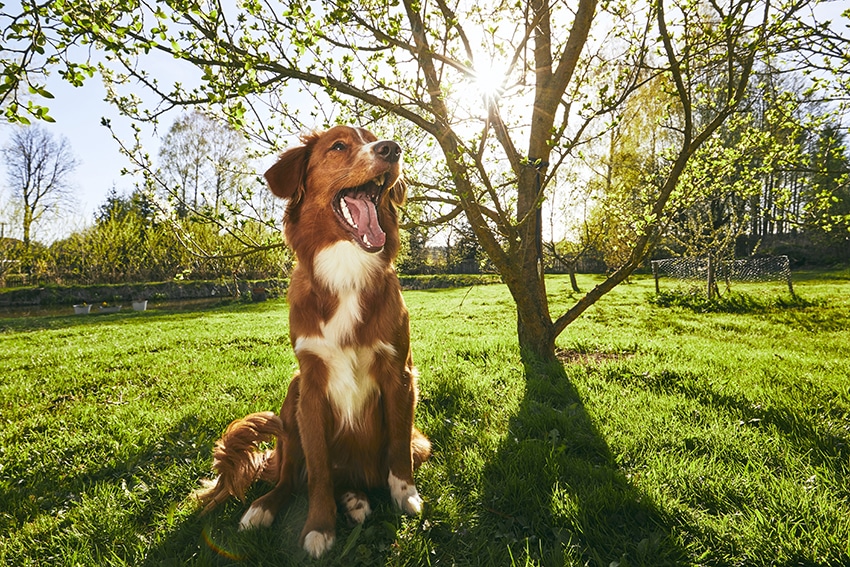
If you and your pooch have to evacuate due to a fire, you may not be out of the woods yet. Keep a close eye on your special pal for signs of smoke inhalation, such as:
- Lethargy
- Coughing
- Difficulty breathing or rapid breathing
- Reddened eyes
- Changes in his posture to make breathing easier
- Abnormally colored mucus membranes (gums may be pale, blue, or cherry red)
- Confusion
- Fainting
- Vomiting
If you notice any of these signs following a fire, first responders may be able to help. Once you’re in a safe place, contact your veterinarian immediately.
Keep Your Local Veterinary Clinic Contact Information With You
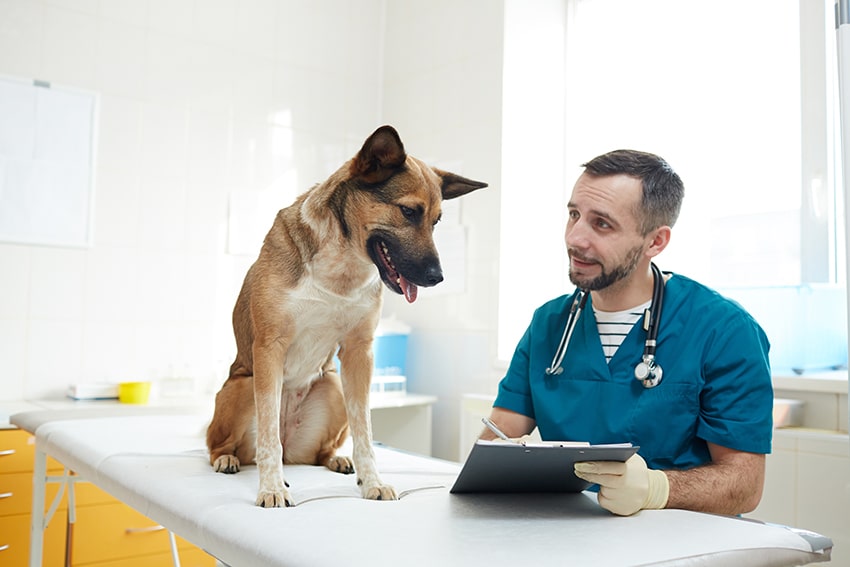
In the process of evacuating from a fire, you or your pooch could become injured. You should keep your veterinarian’s number and address in your phone contacts so that you’ll be able to reach them quickly. If there are other clinics or an emergency care center in the area, consider saving a back-up contact in case your pup’s normal doctor isn’t readily available. That way you’ll know where to take Fido if he needs immediate care.
Prevention is Key for Fire Safety

The best way to protect your pet from fire is to practice prevention. By having a plan in place and preparing evacuation supplies, you’ll be better equipped in case of an emergency. Remember to conduct periodic fire drills so that everyone knows what they should do. That way, you won’t have to think on your feet, and you’ll be less likely to panic.

